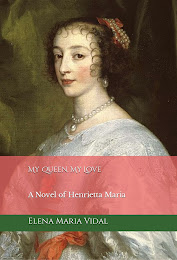However, for every man directly involved in the Wars of the Roses there were numerous female relatives who were not only themselves affected by the conflict, but played an active part in it. Before you think I’ve gone too far, I’m not suggesting there were vast swathes of pseudo-Amazons marauding around fifteenth century England. Women did not fight in the Wars, as far as anyone has discovered. Even Margaret of Anjou, who was the leader of the Lancastrian resistance from 1461-71 never raised a lance. But perhaps our obsession with the bloodiness of this conflict, with the horror of violence on English soil, has blinded us to the essential work of women in this period. That is understandable. After all, attainder law and enfeoffment are definitely not as ‘sexy’ topics as beheadings and battles. How can the ancient Countess of Oxford, struggling to resist attempts to steal her estate by writing letters and employing lawyers, compare with the exploits of her son – leaping from castles to escape imprisonment and laying siege to St Michael’s Mount? But the activities of noblewomen in this conflict were not considered inconsequential at the time. On the contrary, efforts to claw lands back to one’s family by battling through the law courts or pleading with prominent powerholders were deemed essential to those involved, and at a time when many men found themselves on the wrong side of the law or battlefield, and thus lost their authority (or their life), it fell to their wives and mothers to try to save their estates. (Read more.)Share
Tota pulchra es Maria
5 days ago

















No comments:
Post a Comment